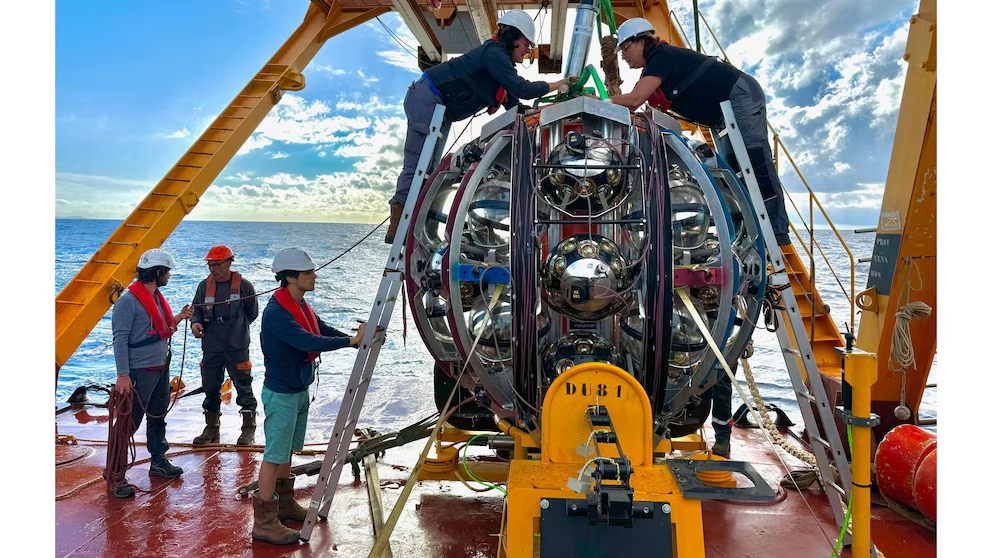
Discovery could offer new insights into high-energy cosmic events
A neutrino detector submerged in the Mediterranean Sea has detected the most energetic neutrino ever recorded, scientists reported Wednesday.
The newly detected ghost particle is around 30 times more energetic than the previous record-holder. Scientists believe it originated beyond the Milky Way, but its exact source remains unknown.
What are neutrinos?
Neutrinos are subatomic particles that are nearly massless and travel through space at close to the speed of light. They are produced by stars like the sun, and trillions of them pass through our bodies every second without us noticing.
Because of their tiny mass and lack of electric charge, neutrinos rarely interact with matter, making them incredibly difficult to detect.
How was this neutrino detected?
Two years ago, a high-energy neutrino collided with matter, producing a small particle called a muon. This muon passed through the underwater detector, emitting flashes of blue light. Scientists then worked backward to estimate the neutrino’s energy, publishing their findings in the journal Nature.
“This is part of trying to understand the highest-energy processes in the universe.”
— Aart Heijboer, National Institute for Subatomic Physics Nikhef
Why is this discovery important?
Finding such an energetic neutrino so early in the experiment suggests there may be more of them than previously thought.
“It’s a sign that we’re on the right track, and it’s also a hint that maybe there might be a surprise.”
— Denver Whittington, Syracuse University
Neutrino detectors are typically placed deep underwater, in ice, or underground to shield them from radiation at Earth’s surface. The detector that made this discovery is part of a deep-sea neutrino observatory that is still under construction.
What’s next?
Scientists say it is too soon to determine the exact source of the neutrino. More observations from other telescopes will be needed to confirm its origins.
“It’s one event. We have to see what the other telescopes are also observing.”
— Mary Bishai, Brookhaven National Laboratory
This discovery could help scientists better understand some of the most extreme cosmic events, including supernovae, black holes, and gamma-ray bursts.






